Rice water is a food by-product that can be utilized to fertilize plants and encourage plant health due to the vitamins and minerals it contains.
What is rice water?
Rice water is obtained either by boiling or washing rice. Fermented rice water is a well-known staple food and feeds millions of people every daylight.
Numerous somebody around the world chooses to wash their rice before cooking due to the processing. Some are suspicious that during processing, there are employees walking around and trampling on the rice with muddy shoes and sweat clothes before it is bagged.

It’s immaculately optional, in my view. Though, if you feel that the method of producing rice products is questionable, you can also rinse the rice before eating it.
First, rinsing the rice lets the rice dust from the manufacturing method liquefy into the water.
Dust is only real grains of rice that have been ground up by constant agitation and direction of the seeds from the pinpoint of processing to the moment they reach your home.
Rice water can even exist, received behind boiling. Nowadays, it’s even an optional point where you can pull the water from the rice behind its cooked rice, just leave it out to absorb back into the rice grains.
Rice water contains starch and beneficial nutrients, and for this reason, numerous somebody does not pull extra water from cook rice.
Nevertheless, strained water after boiling rice is also good for plants and has better nutrients than rice water got just behind washing.
Leftover rice water can exist composted if you understand what are you doing.
Is rice water a fertilizer?
Fermented rice water for plants contains quite a small amount of NPK (nitrogen, phosphorus, and potassium), so it cannot really replace a balanced fertilizer to meet all of your plant’s needs.
Fermented rice water after washing/soaking and rice water after boiling
You can soak grains of uncooked rice to swell and enrich the water or use the water left over from boiling the rice, but boiled rice water for plants is a little healthier.
Soaking rice removes the outer layers of the grain (bran and husk – the latter can be made into an effective mulch!).
This method leaves fewer nutrients in the water compared to rice, as the addition of heat helps to leach out more macro and micronutrients.
Nutrients
Before using washed rice water for plants, you should think about what is in it for our plant fertilizer. Rice is an excellent source of minerals, vitamins, and antioxidants. Research shows that when we wash a grain of rice, almost half of the nutrients are lost from the water due to leaching. This means that rice turned the water into a liquid rich in nutrients.
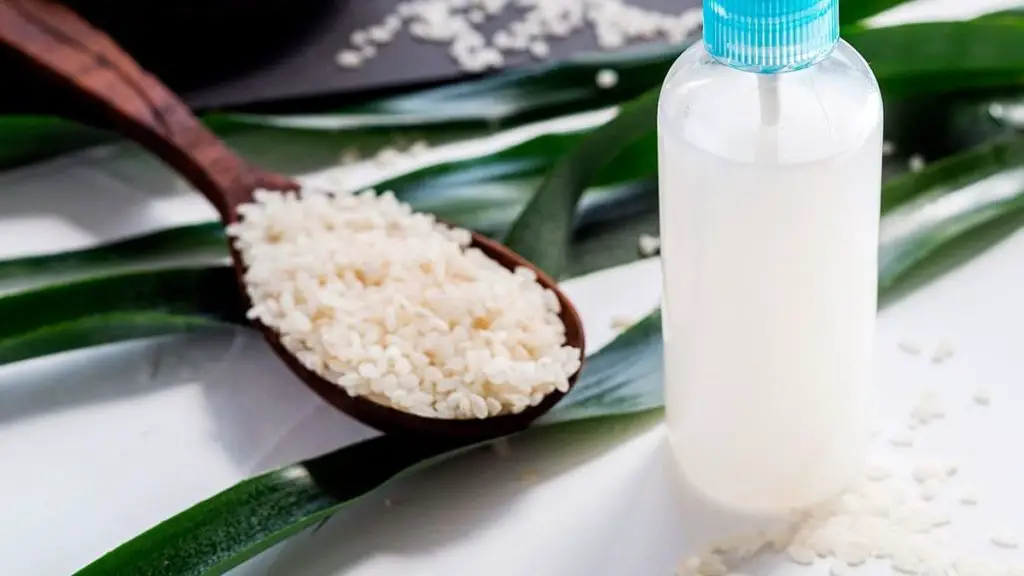
Therefore, it is used for plants by various botanists and garden plants. It works wonderfully when it comes to houseplants. The nutrients present in this white liquid serve as food for healthy plant growth. So, we have listed the percentage of nutrients present in it below:
- Nitrogen (less);
- Phosphorus (less);
- Potassium (medium);
- Vitamins;
- 30 Fibers;
- 15 Amino acids;
- 7 Proteins;
- 45% Iron;
- 11% Zinc;
- 25% Calcium.
As we can notice from this index, this water contains the tiniest part of immediate nutrients N, P, and K – it cannot exist employed as a substitute for fertilizers in plants. While for little houseplants, this exists sufficient to satisfy the nutrient need. It functions as a whole fertilizer seed for little houseplants.
The effect of washed rice water
Washed rice water has an amazing effect on the growth and development of our plants. It is not nutritional fertilizer that works, the magic is in the starch, i.e., in carbohydrates. There are many carbohydrates in fermented rice water. That’s why it works as a fertilizer booster for any plant.
While it provides various nutrients, and minerals including N, P, and K in small amounts, it provides starch in greater amounts. The starch in this water serves as food. Food is not for plants, but for a very important healthy bacteria called Lacto Bacilli.
These Lacto Bacilli bacteria are very beneficial nutrients for our plants. They promote the rapid growth of mycorrhizal fungi. This mycorrhizal fungus forms a network with plant roots. There is a symbiosis between plants and mycorrhiza.

These fungi promote better root rot growth and increase the absorptive surface area of plants by 1000%. When the root is large and widely spread, plants can easily withstand harsh climates and can absorb available nutrients from the soil more efficiently and productively.
Thus, washed rice water has a positive effect on the proper growth and development of plants, and also makes them resistant to diseases. Here’s why – many botanists recommend rice grain water for plants.
You may also be interested in: Menards Fertilizer Vs Scotts (Which is the Superior Choice).
What are the benefits of rice water for plants?
Fermented rice water has a short piece of fertilizer, N, P, and K, which are the main nutrients required by all plants and will have a beneficial effect on any garden, revving plant growth and improving yields.
The starches in rice water likewise supply the plant with essential carbohydrates that can be stored in the plant’s cell membrane until they are utilized for power, and at the same time promote the development of beneficial bacteria such as Lacto Bacilli and mycorrhiza already exist. In the soil, bacteria thrive, providing the basis of nutrition.
The numerous familiar type of rice in the United States, white rice is long-grain rice that contains stood milled to remove the external husks and layers of bran.
Parts of rice grain
Frame. Each grain of rice is encased in a tough outer shell or husk that must be removed before consumption.
Rice husk is the husk that is removed from each grain of rice after harvest. The shells are then boiled at a temperature high enough to sterilize.
Bran. Under the husk, the bran layer is not removed from all types of rice. This nutritious whole grain portion is usually yellowish brown in color, but can be reddish or black depending on the pigmentation of the bran layers.
White rice. After removing the bran and germ layers, white rice remains. This part of the rice, known as the endosperm, is the most commonly consumed.
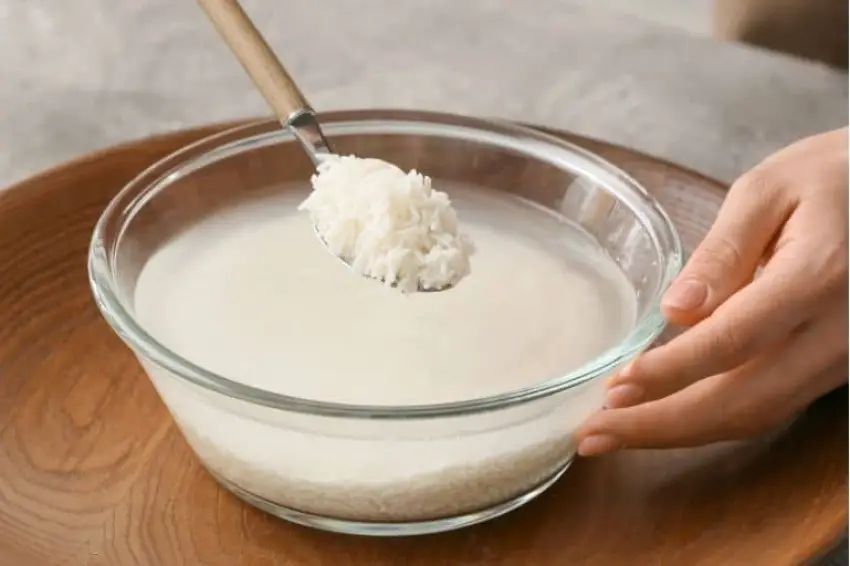
Although some people use this part of the rice grain as a soil fertilizer, it is not recommended and may have some negative effects on the soil, which we will explain later.
Germ. Rice germs or grains under the body are rich in nutrients. Full of B vitamins, minerals, and proteins, it helps give the rice its color and added nutritional benefits.
While this may mean that the rice itself contains fewer nutrients and fiber, it is good for plants because the water will still contain the nutrients and minerals found in the white parts of the grain.
Now that we have seen what a grain of rice is made of and what it contains. Let’s see how these nutrients benefit our plants.
List of key points on how rice water benefits plants
- The carbohydrate mixtures in rice are produced of oxygen, carbon, nitrogen, hydrogen, and further components.
- Carbohydrates are also known as complex sugars.
- Bacteria love these sugars and they will thrive in an environment where food is plentiful.
- Bacteria help break down organic material in the soil into useful nutrients for plant growth.
- With increased bacterial growth in the soil, more nutrients will be available to plants as a result of the breakdown of these carbohydrates.
- The soil has an increased content of nitrogen (N), as well as phosphorus (P), potassium (K), and other minerals that plants can use.
- As a result, health and growth rate increase.
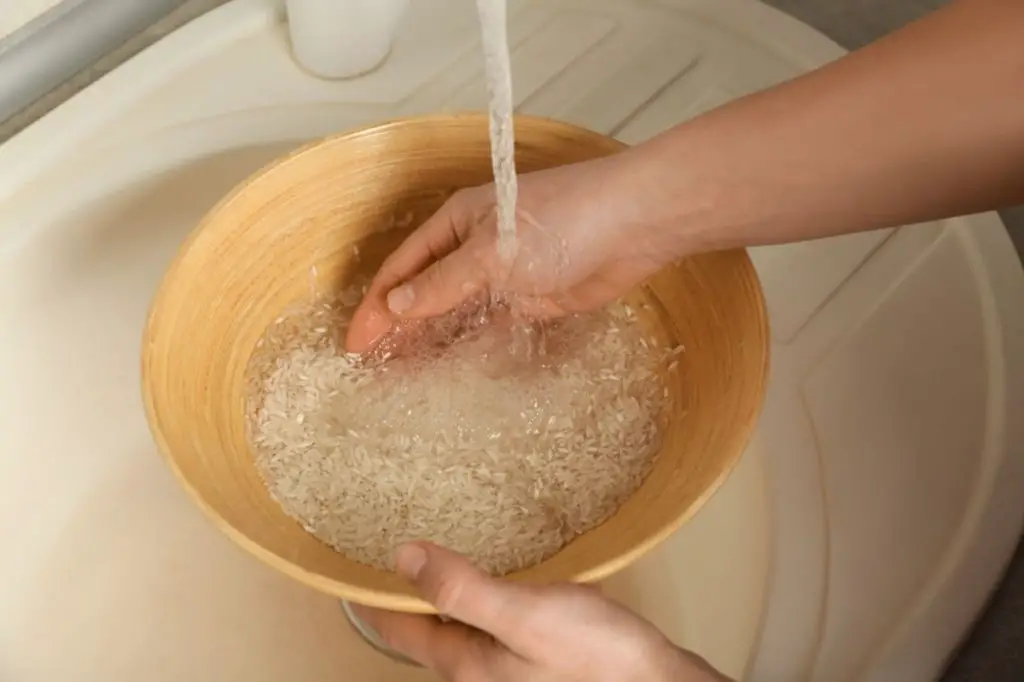
How to make rice water?
You don’t have to use the rice and throw it away. Rice water can be obtained as a by-product of your daily cooking rice, and it reduces waste by reusing leftover rice water after washing or soaking.
Rice water can be prepared either by rinsing the rice grains or by straining the excess water after boiling the rice, as explained earlier.
These are the two methods commonly used to obtain rice water.
Rice water after washing or soaking
Soaking is one of the fastest ways to prepare rice water, as it simply puts the rice in water to soak.
Use this method to get rice water from a rinse:
- Use ½ cup of uncooked rice (or the amount of rice indicated in the recipe);
- Place in a small bowl;
- Add 2-3 cups of water to the rice bowl;
- Rinse the rice thoroughly for 2-3 minutes;
- Leave to soak for 30-45 minutes;
- After soaking, stir the water to agitate and mix the settled nutrients;
- Strain the rice water into a clean bowl.
Rice water from boiling
Use this method to get rice water by boiling it.
- Take ½ cup of rice (or the amount of rice indicated in the recipe);
- Place the rice in a regular rice cooker (not cooking rice);
- Mix it right;
- Place over medium heat (350 °F);
- Let it boil for 30-45 minutes;
- Strain the rice and save the rest of the water.
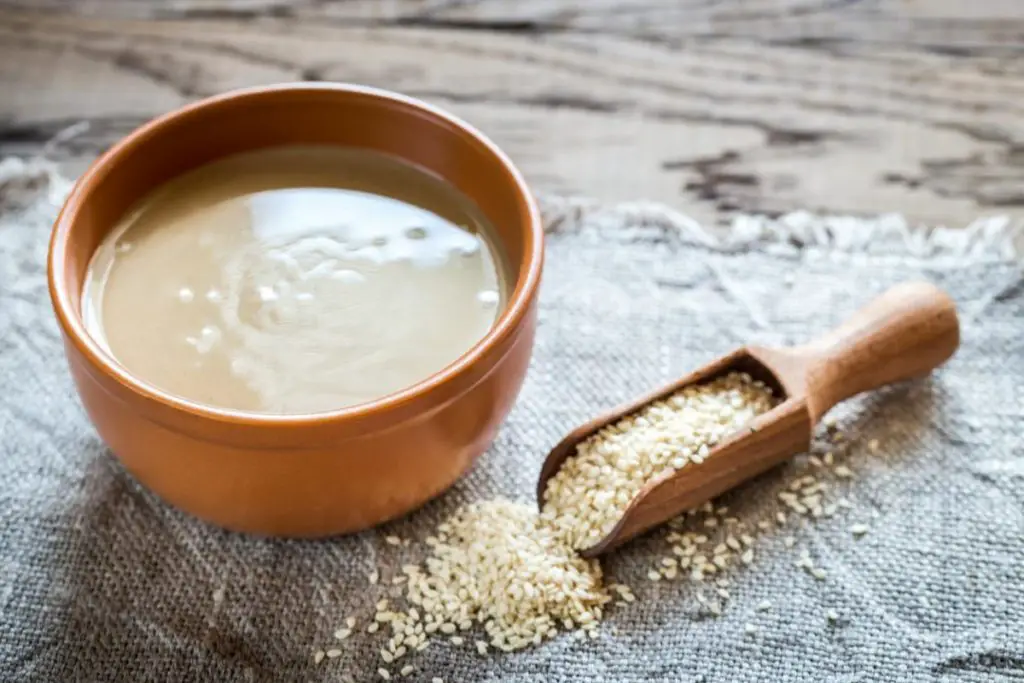
If the resulting residue is too thick, you can also add water to thin it out for your plants.
Boiled rice water will contain more nutrients than rinsing water. This is because the heat from boiling causes more nutrients from the rice to leach into the water.
Rice water for plants – benefits
“Starch is a key ingredient in rice water,” explains exotic grower Ben B. of Seattle Garden Fruit, “it feeds the beneficial Lacto Bacilli bacteria that help nourish good mycorrhizal fungi, strengthening plant roots and making them more resistant to disease.”
Minimal NPK content can also help crop production when used along with stronger organic fertilizers.
Rice water for plants – disadvantages
The carbohydrates in starch are a double-edged sword for your plants, as they can:
- Strengthen the soil;
- Attract starch-eating pests such as spiders and ants;
- They leave a sour smell (rice water ferments for several days at high temperatures);
- Provide food for bad soil bacteria;
- Overload plants (most root systems cannot absorb carbohydrates).
Finally, the preparation and storage of rice water may not be practical due to insufficient nutrients.
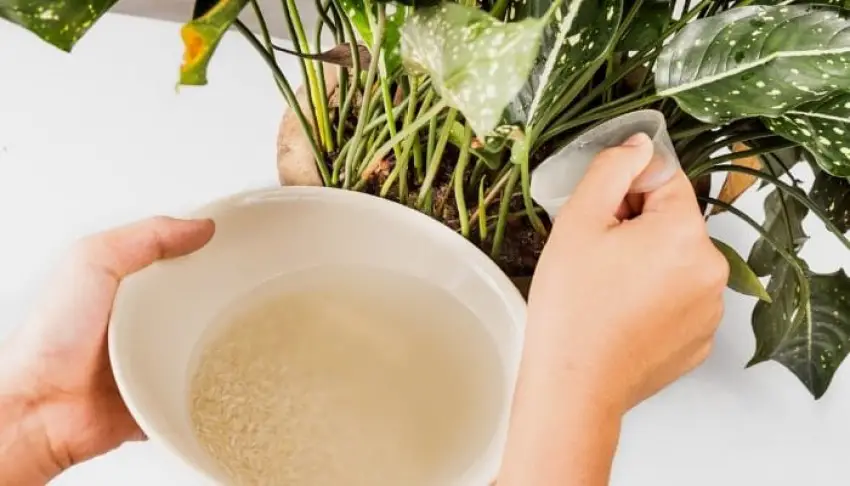
Frequently Asked Questions
Rice water contains small amounts of beneficial vitamins and minerals, and the high starch content can provide energy for beneficial soil bacteria. However, rice water can also feed bad bacteria in the soil, which can lead to serious fungal problems in indoor plants that depend on organic matter to thrive.
Rice water should not be used more than once every 2-3 weeks due to its rich carbohydrate content and the hardening properties of the soil. If you are using it, it is best to apply it to your plants in the seedling stage when they are most active and require gentle stimulation.
Simmered or soaked rice water (cooled to room temperature) can stand misted on your houseplants, involved in the soil of garden plants, or provided via top watering. Just move the sieved rice water into the spray bottle, or top watering can.
Yes, cooked pasta water is rich in starch and beneficial nutrients that help stimulate growth by acting as additional fertilizer. Be sure to use unsalted pasta water as the alternative will kill your plants, and let the boiled water cool to avoid plant shock.
Yes, bone broth can be an effective and natural form of plant fertilizer, as it is rich in the essential macronutrient phosphorus. Phosphorus promotes strong root development, so it is recommended to use bone broth when growing root crops. A dry bone meal can also be helpful.
Rice water can be used to irrigate plants with added vital nutrients. It needs to be diluted before use so that it can be applied as a spray, as plants need drier, more airy soil. They can be sprayed with rice water solution during the normal watering regimen.
Conclusion
Rice water contains some beneficial plant nutrients and is known to feed beneficial soil bacteria, but there is no hard evidence to support claims that it is beneficial to plant food.
- Why Are There Still No Tomatoes in My Tomato Plants? Let’s Fix the Issue! - July 13, 2023
- Water Propagation White Stuff on Roots: Everything You Should Know! - July 11, 2023
- String of Dolphins Drying Up: Solved! - July 11, 2023

